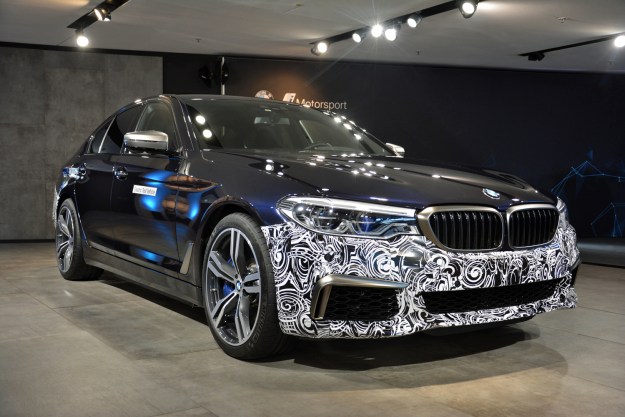BMW is showing a concept called i8 Mirrorless at the Consumer Electronics Show (CES) in Las Vegas, Nevada.
You don’t need to consult a seasoned auto industry analyst to decipher that the concept is essentially an i8 without mirrors, but there’s a lot more to the story than that. While BMW isn’t the first (or the last) car maker to replace the mirrors with cameras, the Munich-based company explains that its system is completely different from what’s been done so far.
The mirror-less tech relies on three tiny cameras fitted with dirt repellent-coated Gorilla Glass lenses. Two of them are integrated into aerodynamically-optimized, wing-shaped holders mounted on the doors, roughly in the same spot as the mirrors would be, and the third one is hidden right above the rear window. The footage captured by the three cameras is digitally stitched and transferred to a screen that replaces the rear-view mirror. It stretches 11.8 inches wide and 2.9 inches tall, dimensions that make it slightly bigger in both directions than the average rear-view mirror.

The system gives drivers an unobstructed panoramic view of what’s behind the car. It detects other cars and even relatively small obstacles like motorcycles and bicycles, and it warns the driver if a vehicle is traveling in one of the i8’s blind spots. Finally, it automatically widens the angle of view if it senses that the driver is about to make a turn.
The cameras make driving safer and more convenient because, unlike mirrors, they never need to be adjusted. BMW explains they also help eliminate wind noise, and they reduce the i8’s already low drag coefficient. Passengers are set to benefit from the new technology, too, because they will have a better view of the outside world and will no longer be bothered by direct glare.
BMW’s mirror-less technology sounds like it’s nearly ready for production, but it might be a while before you can tick the “camera” box on the list of options because strict federal and state regulations dictate that every car needs to be equipped with at least one exterior mirror on the driver’s side and a rear-view mirror.
Editors' Recommendations
- CES 2023: BMW is going all-in on Android Auto Open Source – here’s why
- 2023 BMW iX M60 is electric, spacious, and surprisingly quick
- BMW and Harman want to bring 5G to your car. It’s harder than you’d think
- BMW and Samsung are Bringing 5G to an Electric SUV as soon as 2021
- Aston Martin combines cameras and mirrors to give drivers maximum visibility



